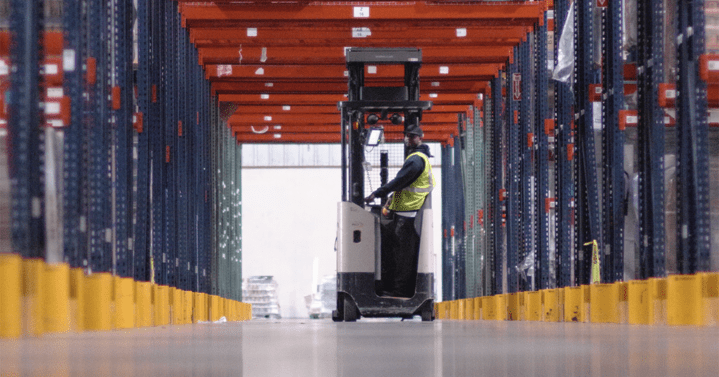Many effects are being seen and felt in the wake of more than two years of pandemic upheaval and disruption. For shippers concerned about port drayage services, port congestion concerns and issues surrounding port delays are among the most impactful. Of all the options to consider, utilizing local warehousing and temporary storage options may be the most logical and influential way to overcome U.S. port congestion concerns.
A recent report from a Bloomberg interview with industry experts touched on port backlogs and their effect on the economy and global supply chain. The report pointed out that the current instability and issues are “just a continuation of 2021. So, we still see pockets of instability and a lack of transparency and predictability in the supply chain. That story is going to continue through really all of 2022. [Experts] don’t think there’s going to be any major reprieve in terms of market stability and predictability.”
This outlook on the year ahead is causing many shippers and freight logistics managers to consider ways to ease supply chain disruptions and overcome port congestion across the country.
Increased Port Activity Increases the Need for Faster Driver Turn Times
The majority of imports that come into the country come via ocean freight, predominantly handled by a few major ports along the west coast. However, these ports are struggling to keep up with the incoming flow of cargo containers as shippers are slow to pick up cargo and free up containers and loading space on major docks. Port congestion has become a significant concern and is one of the leading issues surrounding freight shipping logistics, warehouse operations, and delivery management.
Port delays require more reliable carrier and driver access accounting for last-minute deliveries, shipping delays, rush orders, and faster turnaround times. As more and more cargo makes its way into the nation’s ports, especially alternative ports that are not as accustomed to high volumes, a reliable driver talent pool is essential to continued success within the volatile market of today. This will be a critical piece of the port container management puzzle that shippers face today.
Local Warehousing Improves US Port Congestion in Many Ways
An effective and easily implemented option to deal with growing congestion and backlogs at major ports is to utilize local warehouse inventory management and storage options. Picking up orders right away and holding them for later delivery at a local warehouse can improve freight logistics and ease U.S. port congestion in several key ways:
- An increased number of dray shipments and loads can be transported and moved off the docks.
- Faster drayage service makes it easier to avoid port delays and the costs associated with longer dwell times.
- There will be less hassle over waiting for unloading space to open since local holding options are available.
- Faster ship unloading and speedier return of containers and equipment for the next shipper to utilize for their cargo.
- Creates more opportunities to improve services and deal with the many capacity challenges of drayage today.
- Lowers demand for port-owned warehousing and provides the benefit of more personalized storage and access.
- Improves staging and deconsolidation processes that can speed shipments and reduce port congestion overall.
- Adds more space for BCOs with limited warehousing and increases the opportunity to secure more orders and maintain capacity.
U.S. port congestion is a major problem for shippers today. Utilizing innovative warehousing options can help alleviate some of this pressure. Opting to move freight to temporary warehouse holdings nearby will not only help keep the freight moving for individual shippers but will also help ports clear backlogs and bottlenecks.
Tap the Potential of Local Warehousing to Ease Port Congestion With PortCity
Overcoming issues with port congestion and port delays improve services across the board by speeding up both standard and specialty freight transport, reducing rates and fees for shipping, and giving customers on-time deliveries. Indeed, U.S. port congestion and bottlenecks will likely continue for some time. Shipping disruptions and supply chain instability will continue to be contributing factors that freight transportation managers must solve. Tapping into the potential benefits of local warehousing can make a huge impact on your freight shipping and delivery services. Contact PortCity to learn more about overcoming port congestion and port delays today with a readily available warehousing solution that’s nearest the Port of Savannah now.
